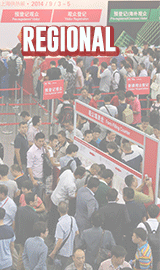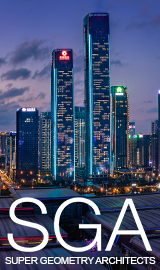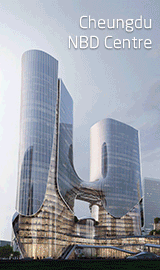Knight Frank’s latest Hong Kong Quarterly Report highlights varied property market performance. The demand for Grade-A office sector in Hong Kong Island is driven by financial institutions seeking upgrades and expansion opportunities, particularly premium buildings in Central. Kowloon’s office leasing activity has increased among professional services and insurance firms. The residential market showed momentum with a 6.7% month-on-month (MoM) rise in September transactions, continuing to grow steadily amid soft pricing and policy support. The retail sales saw a 3.8% year-on-year (YoY) increase in August, signalling a gradual recovery in consumer demand.
Grade-A Office:
Hong Kong Island
Hong Kong Island’s leasing demand is primarily driven by financial institutions—seeking to upgrade or expand into premium Grade-A office spaces in Central. This surge in activity has intensified competition among traditional Grade-A buildings, which are now focusing on tenant retention and actively competing with new developments to capture limited relocation demand. Consequently, pre-leasing progress in some new projects has slowed. Nonetheless, Premium Central recorded a year to date (YTD) rental decline of just -1.3% in August, outperforming the overall Grade-A market’s -5.2% drop.
Beyond the financial sector, co-working space operators are expanding to meet rising demand from Chinese mainland enterprises and start-ups. PRC legal firms also contribute to leasing momentum. Meanwhile, the technology sector is generating scattered but notable interest in high-quality office buildings located in non-core areas, often requiring substantial floor plates to accommodate expansion needs.
Kowloon
Leasing activity in Kowloon, particularly in Tsim Sha Tsui, witnesses an increase in leasing transactions, primarily driven by professional services and insurance firms. Tsim Sha Tsui continues to be highly sought after due to its strategic location and proximity to the Express Rail Link (XRL), making it especially attractive to businesses serving Chinese clients. Properties featuring renovated interiors and sea views are particularly favoured.
Relocation sentiment weakened in Q3, with a growing preference for lease renewals amid global trade uncertainties and rising renovation costs. The initial capital expenditure and rising renovation costs have dampened tenants’ appetite for relocation. In response, landlords are enhancing their leasing packages by offering incentives to attract new occupiers.
Residential:
In September, Hong Kong’s residential market demonstrated momentum, with total transactions rising 6.7% month-on-month to 5,643 units. Primary sales led the growth, accounting for 35% of total transactions—up from 18% a year earlier—supported by a strong rebound in the stock market and a 25-basis-point rate cut by the HKMA.
Despite the uptick in activity, home prices in the primary market remained soft as developers focused on clearing unsold inventory. Approximately 13,000 completed first-hand units remain available, with Kai Tak and Tuen Mun holding the most significant shares. Well-located and competitively priced projects continued to outperform.
The luxury residential segment showed resilience, recording 56 transactions over HK$78 million, totalling HK$81.3 billion. Residential leasing demand also rose, driven by students, professionals, and Chinese investors, particularly near the University of Hong Kong. Following the introduction of the progressive rating system in January 2025, luxury tenants have shifted preferences—opting for smaller units or compromising on views to reduce rental costs and rating exposure.
Looking ahead, total transaction volume is projected to reach between 60,000 and 62,000 units in 2025. Home prices are expected to increase 2-3% this year, with a potential rebound of up to 5% in 2026.
Retail:
Hong Kong’s retail sector showed signs of recovery, with sales rising 3.8% YoY in August, marking the fourth consecutive month of growth. However, performance remains uneven across different retail categories. For instance, total sales of consumer durables and furniture and fixtures were down 13-16% for the first eight months YoY.
The luxury segment sales have stronger growth, with August sales up 16.4% YoY, supported by rising gold prices and a rebound in visitor numbers. Gold prices surged 60.6% YoY, boosting demand for gold-related goods and other high-value items. China’s premier brand LAOPU GOLD capitalised on this trend, opening a flagship store in IFC Mall.
Tourism also supported retail activity, with 1.64 million inbound visitors during the National Day Golden Week and Mid-Autumn Festival, 85% of whom were from the Chinese mainland. While recent figures point to a recovery, the market remains in transition. Retail consolidation has left noticeable vacancies across major shopping streets. As it remains unclear whether this consolidation phase has concluded, retail rents are expected to remain broadly stable in the near term.












